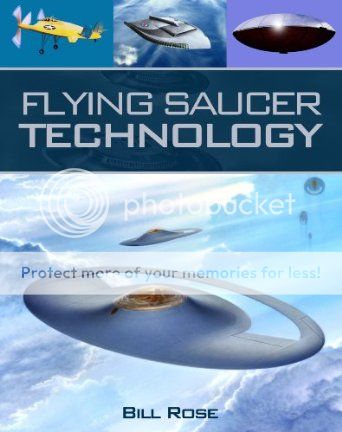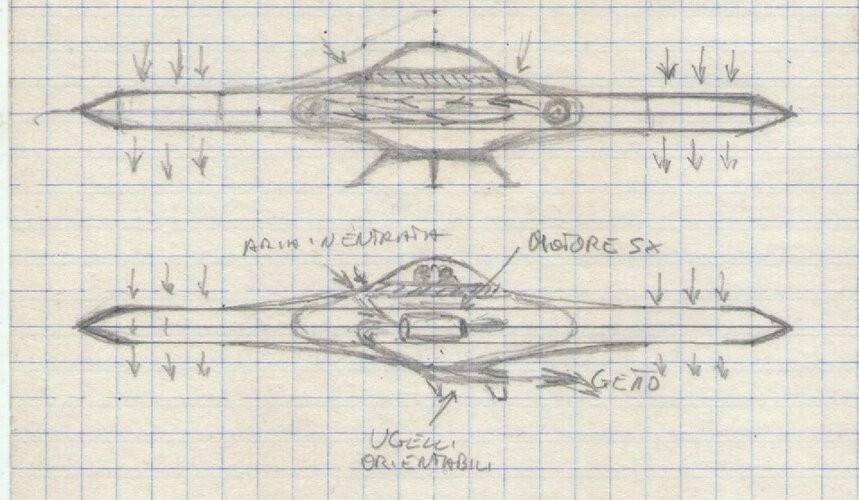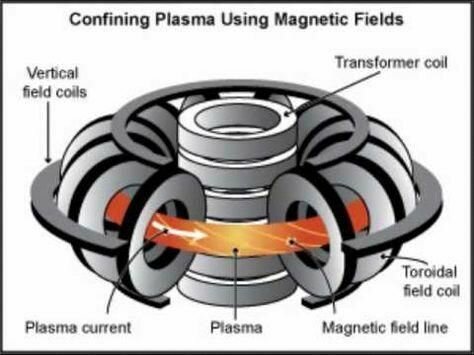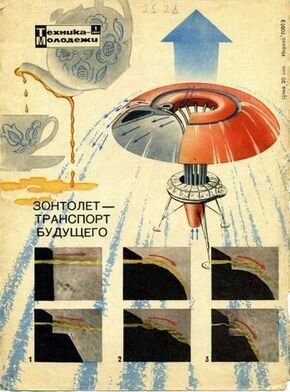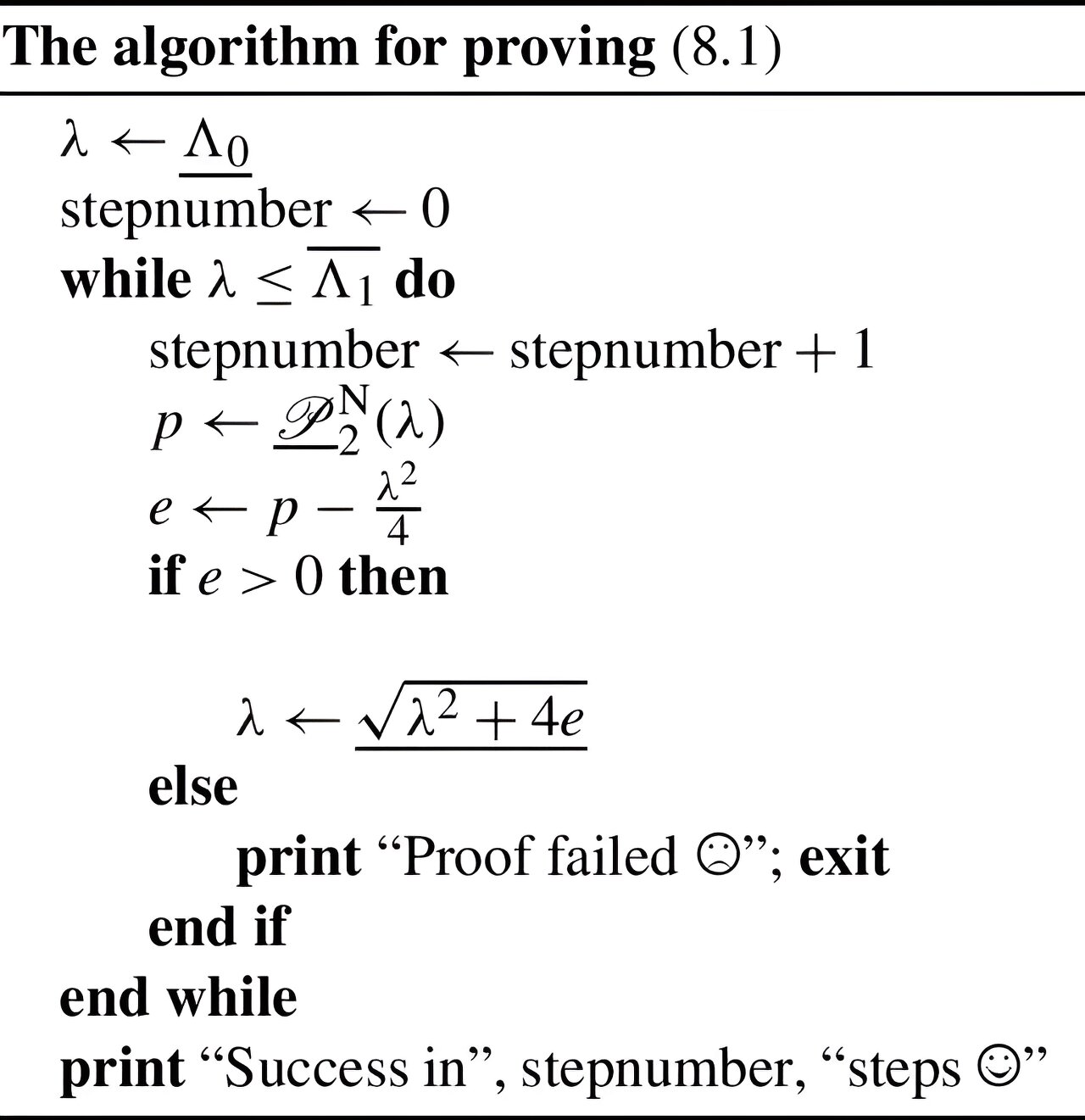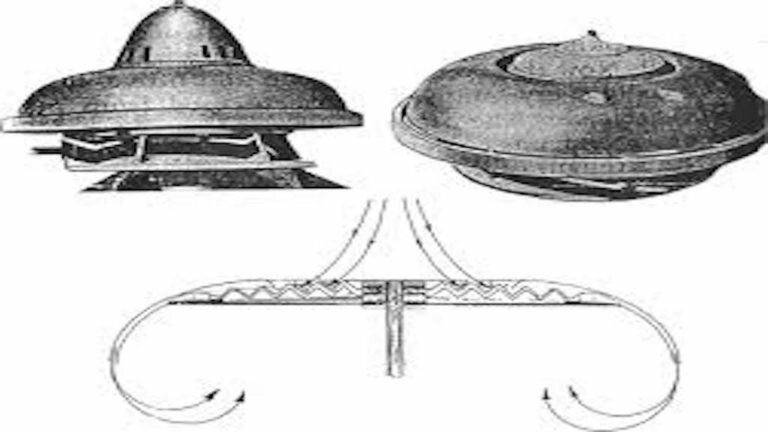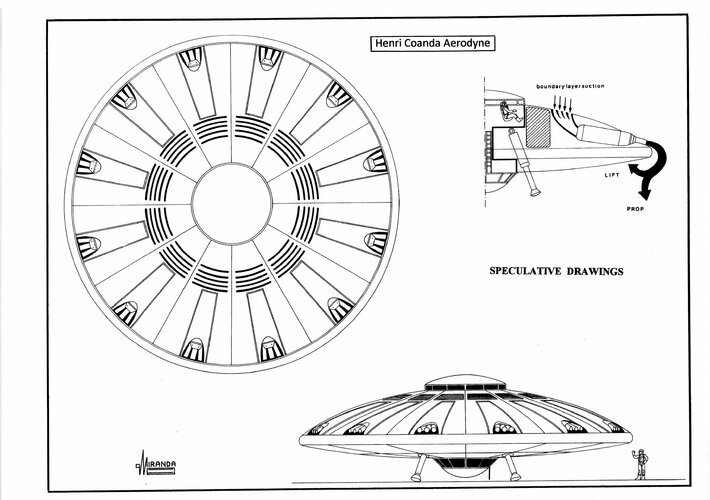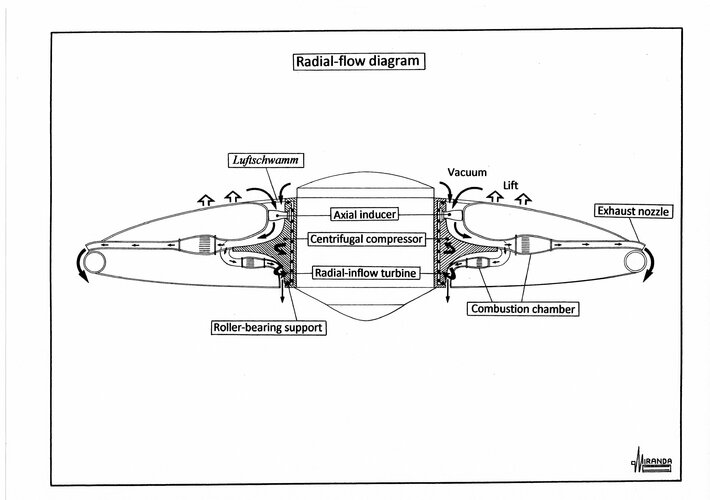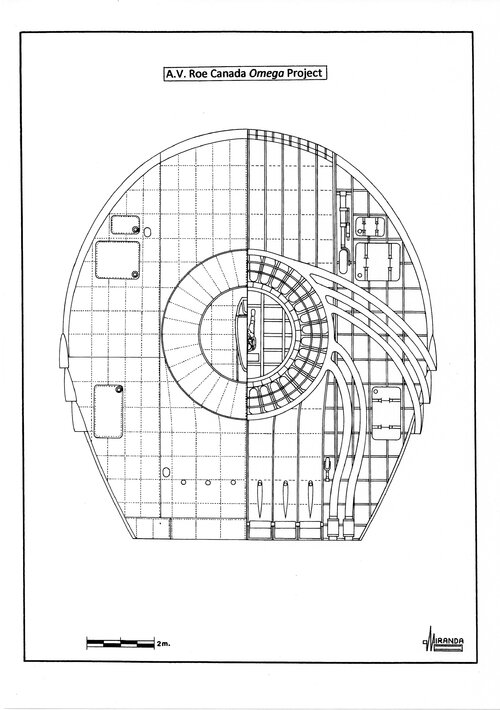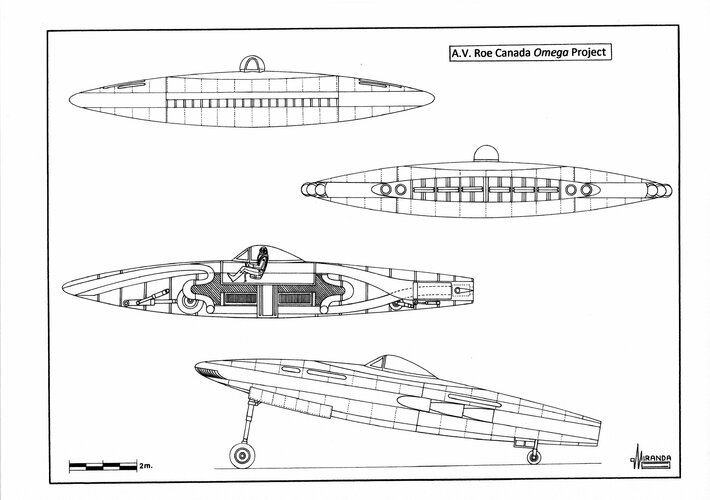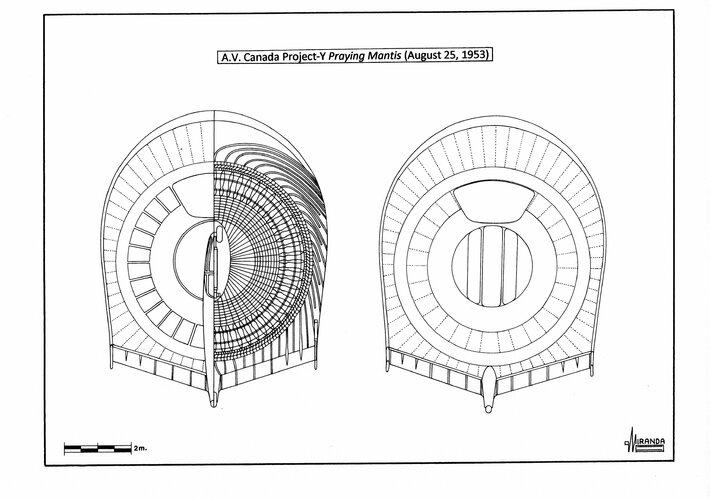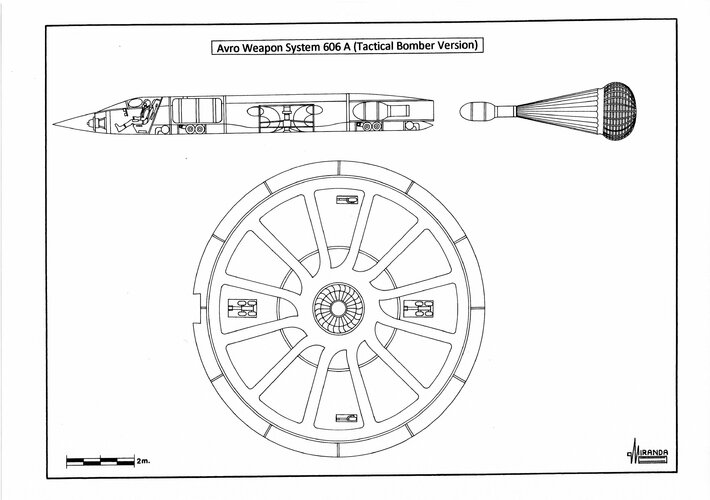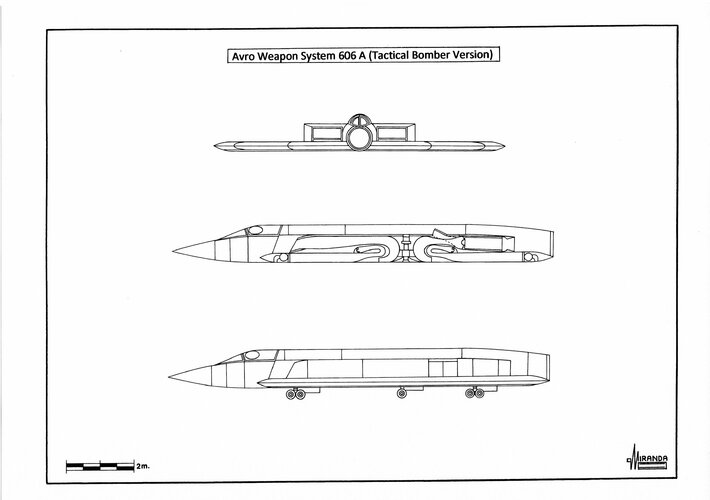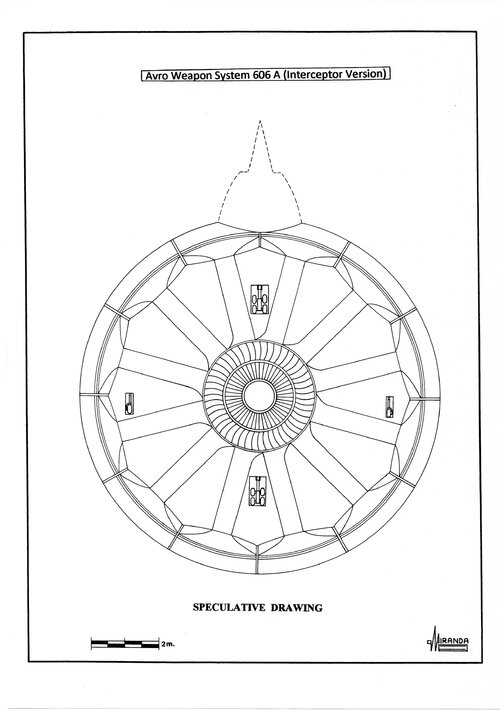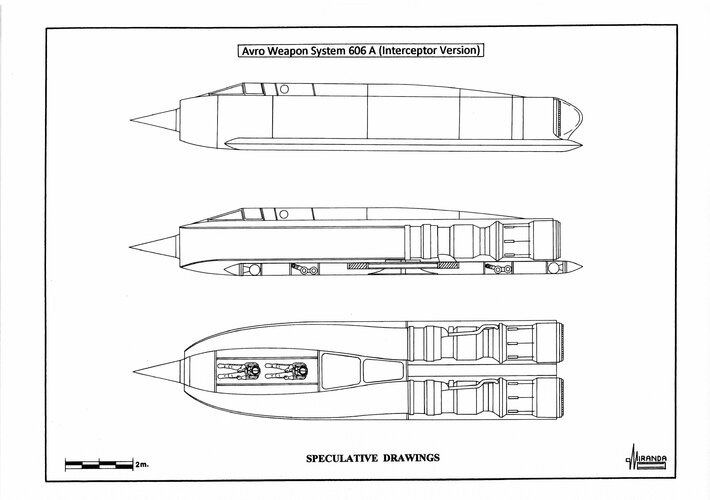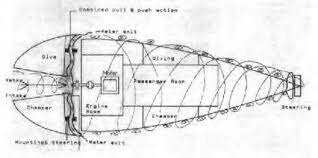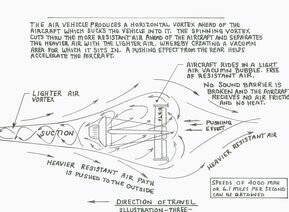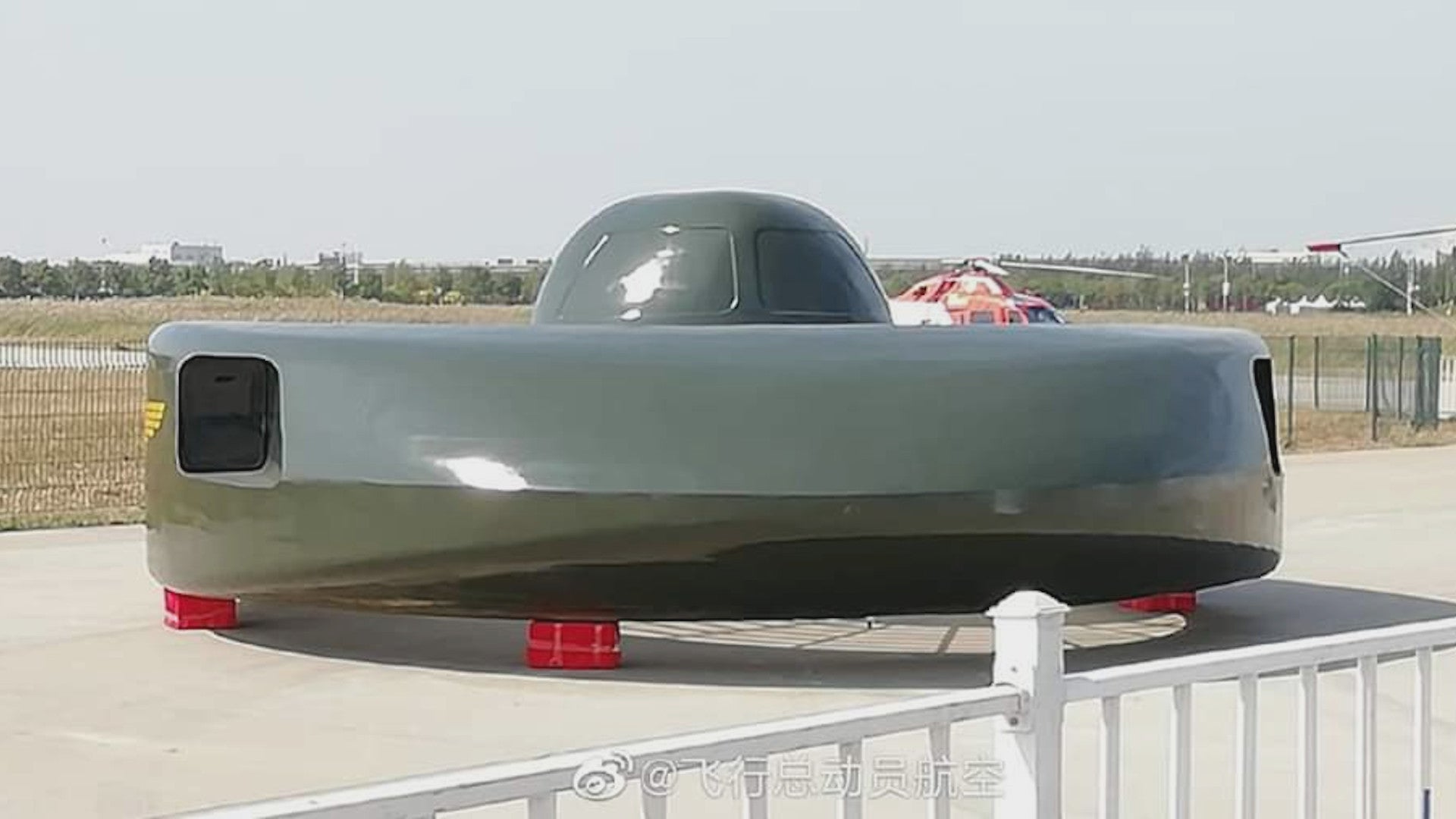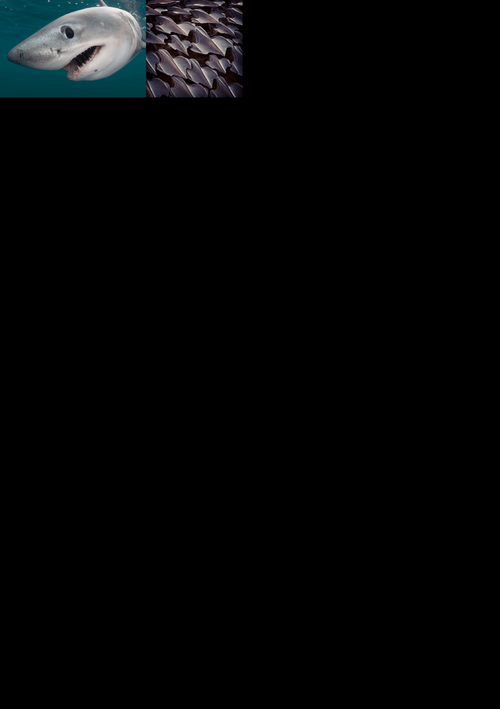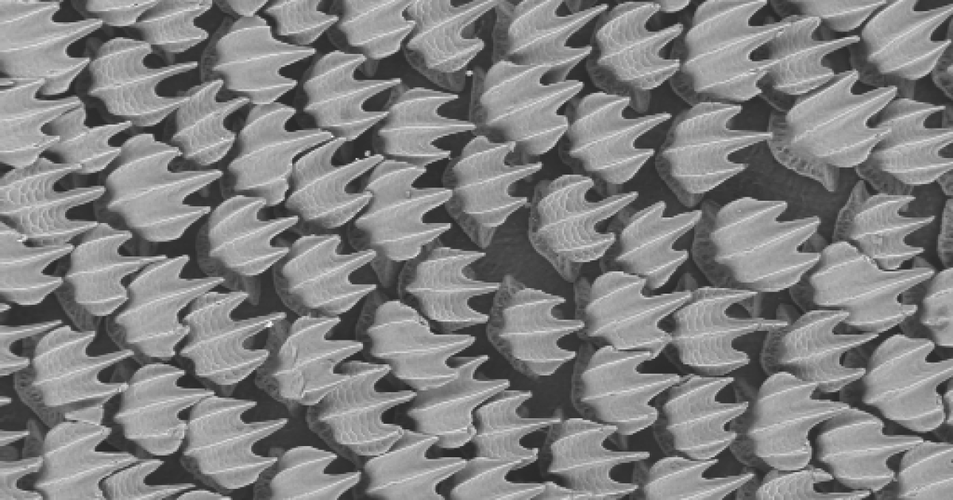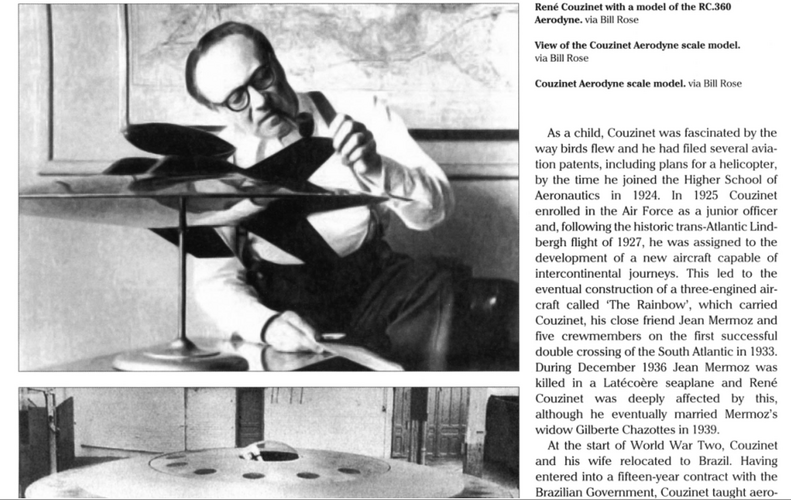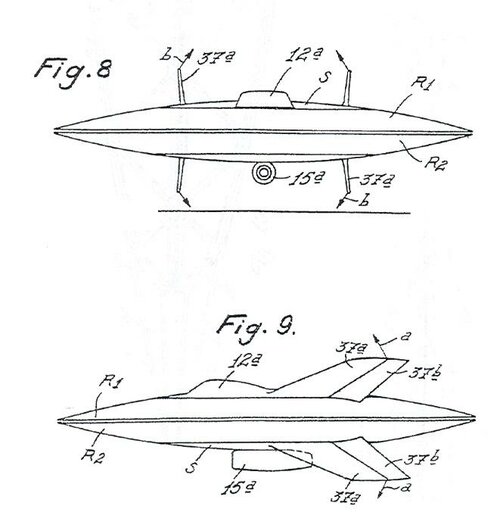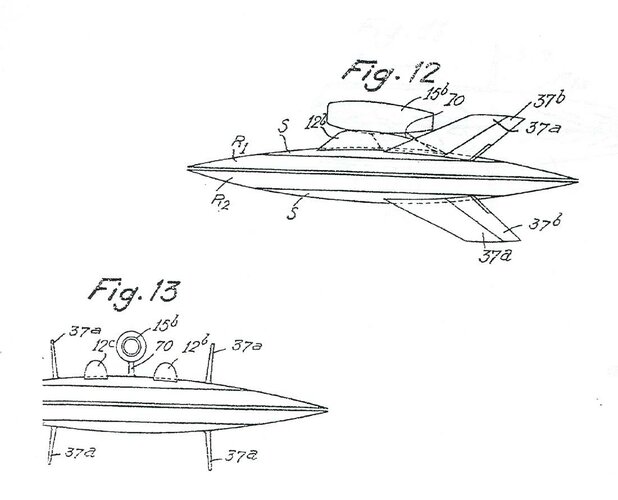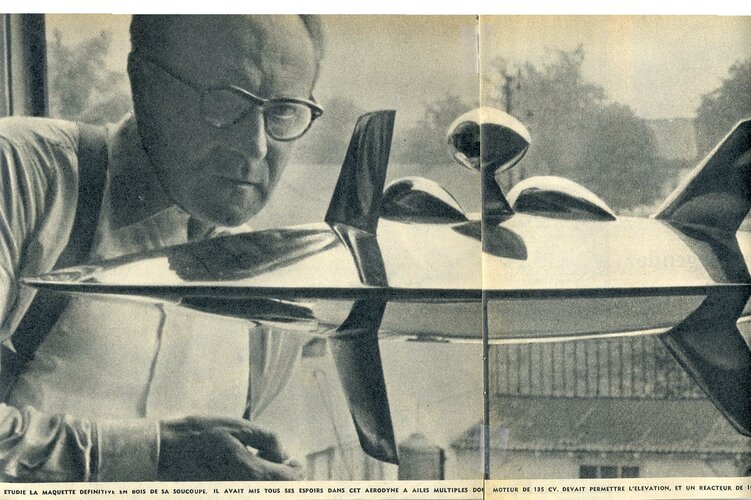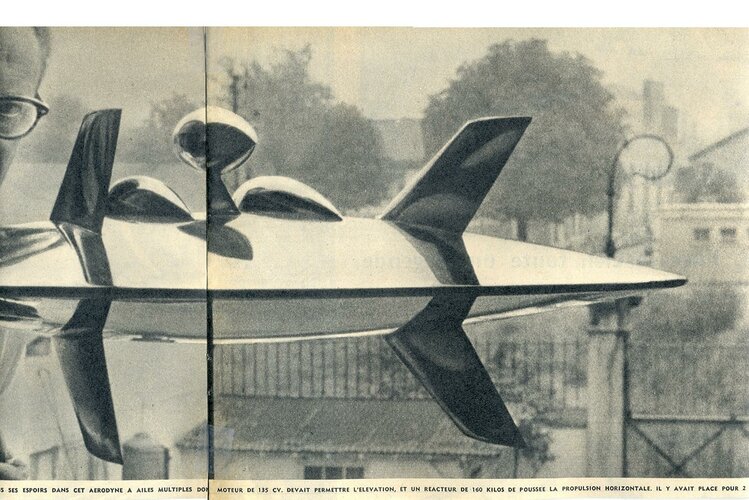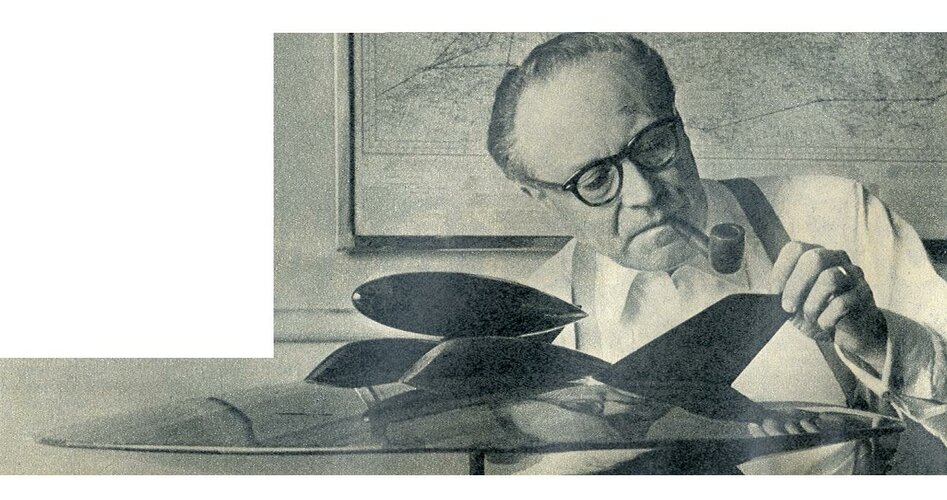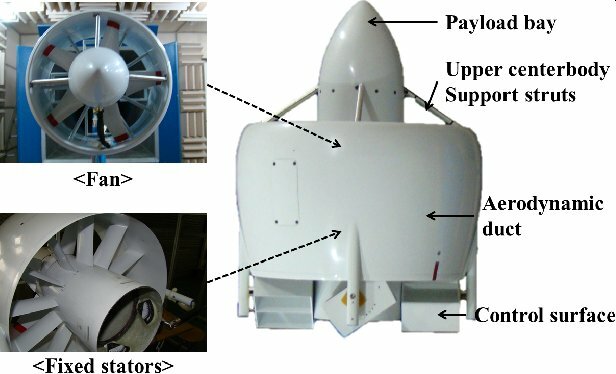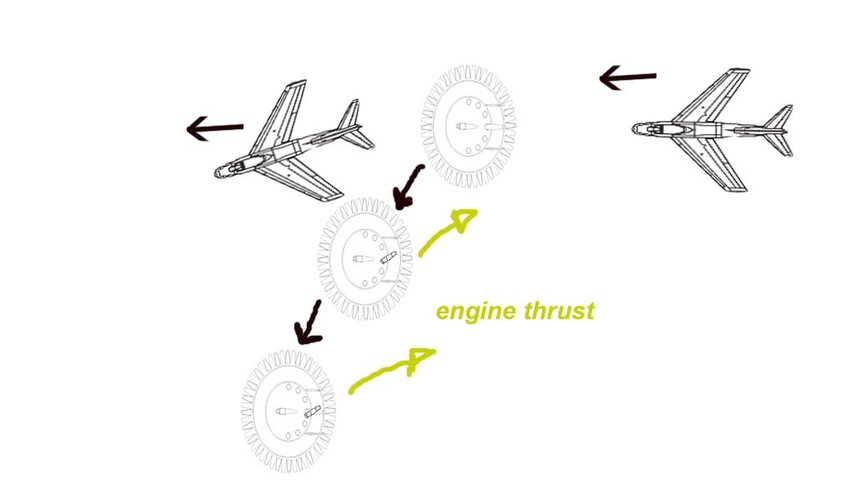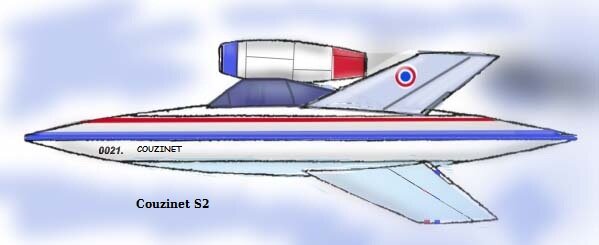German Flying Saucers Bibliography
‘
Die Realität der Flugscheiben’ by Andreas Epp, Michaels Vertrieb editor, 2002.
‘
Flugscheiben-Realität oder Mythos: Gespräche mit dem Flugscheiben-Erfinder’, by Andreas Epp, Michaels Vertrieb editor, 2005.
‘
Die deutschen Waffen und Geheimwaffen des 2. Weltkrieges und ihre Weiterentwicklung’ by Rudolf Lusar, J. F. Lehmann; Edition: 4., stark überarb. u. erw. Aufl. (1962).
Epp, Joseph Andreas, ‘U.S. Army Intelligence, Record Group 319, Box 186, File Number GE013347’. The National Archives at College Park, College Park, Maryland. -
http://www.archives.gov/iwg/declassified-records/rg-319-army-staff/personal-name-files-new.html
‘Evaluation Reports (ER), Final Reports (FR) und Overall Reports der British Intelligence Subcommittee, Reports der Combined Intelligence Objectives Subcommittee (C.I.O.S.) und Field Intelligence Agency (F.I.A.T.)’.
‘Hitler’s Flying Saucers: A guide to German Flying Discs of the Second World War’ by Henry Stevens, Adventure Unlimited, 2013.
‘Flying Saucer Technology’ by Bill Rose, Midland, 2011.
‘Secret Projects- Flying Saucer Aircraft’, by Bill Rose & Tony Buttler, Midland, 2006.
‘Jet Planes of the Third Reich -The Secret projects -Volume One’, by Manfred Griehl, Monogram, 1998.
‘Secret Weapons of the Third Reich’ by Leslie E. Simon, WE, INC., Publishers, 1971.
‘Messerschmitt Me 328
Bordjäger’, by Paul Malmassari, Wingmasters Nº 2.
‘
Der Fliegende Bierdeckel’, by Arthur Sack, Die Deutsche Sportflieger, November 1939.
‘
Der Kreisflüger AS6 V1’, by Hans Justus Meier, Luftfahrt International 4/79.
‘
Aktennotizen und Niederschriftender der ATG-Maschinenbau GmbH.’, Leipzig, von 4.2, 3.2, 17.4 und 18.5, 1944.
‘
Veröffentlichungen zuden Modellen von Arthur Sack’,
Der Flieger 11-12/1940.
‘
Hochwertige Motorflugmodelle’, Der Deutsche Sportflieger, 9/1940.
‘
Das Buch der Deutschen Luftfahrttechnik’, Bidteil, Mainz, 1970.
Der Flieger 4/1944.
Air International, March 1979.
‘
Neue formen des Starrflügel-Flugzeuges’, by W. Zuerl,
Der Flieger 1/1944.
‘
Dreikomponentenmessungen an einem Kreisflügel mi zwei klappen’, by E. Hildenbrand, Aerodynamische Versuchsanstalt Göttingen, Beritche Nr.40/14/40 vom 3.8.1940 und 41/14/5 vom 21.2.1941.
‘
Deutsche Kreisflügelflugzeuge’,
Flugzeug Profile Nr.23.
‘
Fliegender Bierdeckel’, by Volker Koos,
Flug Revue 3/1994.
‘
Kreisflügler Arthur Sack AS6’, by Volker Koos,
Flug Revue 11/1998.
‘Saucers, Swastikas and Psyops’, by Joseph T. Farrell, Adventures Unlimited, 2011.
France Soir, June 27, 1952.
‘
Erste Flugscheibe flog 1945 in Prag enthullt speers beauftragter’, by Georg Klein,
Welt am Sonntag, April 25, 1953.
‘German Discs: UFO in the Third Reich’, Los Angeles Mirror, 24 March 1950.
Dortmund Newspaper, Westphalian Overview, 9 July 1947.
‘
Deutsche Flugkreisel, Gab’s die?’ Luftfahrt International May/June 1975.
‘
Projekt Flugkreisel’, by Rudolph Schriever,
Bremerhavener Zeit entstanden.
‘
Untertassen-Flieger Combination’,
Der Spiegel, 30 March 1950.
‘
Flugkreisel Irdisch’, Helm & Welt Nr.14, 2 April 1950.
‘
Fliegende Untertassen’,
Die 7 Tage Nr.26, June 1952.
‘
Fliegende Untertasse’, Farb Illustrierte Nr.18, September 1952.
‘
Fliegende Untertasse in Deutschland erfunden’, Deutsche Illustrierte, S.1350/51.
‘Secret Wings of WWII: Nazi Technology and the Allied Arms Race’, by Lance Cole, Pen & Sword Aviation, 2015.
‘
Das gab’s die fliegende untertasse der deutschen Luftwaffe’, ZB Illustrierte für menschen in atomzeitalter Nr.25, December 1953.
‘
Wunderwaffen 1945’, Bild am Sonntag, 17 February 1957.
‘
Die UFOs, eine deutsche Erfindung’, Das neue Zeitalter Nr.41, October 1957.
‘
Deutsche Kreisflügelflugzeuge’, by Hans Justus Meier,
Flugzeug 2/89.
‘
Deutsche Geheimwaffen und Wunderwaffen des II. Weltkrieges’, by Christof Friedrich, Samisdat Publishers, Canada.
‘Aeronautical Research in Germany: From Lilienthal until Today’, by Ernst Heinrich Hirschel, Springer 2012.
Henry Coanda Propelling Device Patents 2,157,281/2,131,472/2,108,653 (10 January 1936).
‘Applications of the
Coanda Effect’, by Imants Reba, Scientific American, June 1966.
‘The Coanda Effect’, by R.S. Sproule and S.T. Robinson. CIOS Reports. File Nº IX (1), 1944.
‘The Vanishing Paperclips’ by Hans H. Amtmann, Monogram, 1988.
‘
Ich flog als erster eine untertasse’, Kristall Nr.2, 1956.
‘Intercept but don’t shoot’, by Renato Vesco, Adventures Unlimited Press, 1994.
‘Interceptarlos sin disparar’, by Renato Vesco, Ediciones 29, 1968.
‘Intercept UFO’, by Renato Vesco, Pinnacle Books, 1976.
‘Man-Made UFOS 1944-1994’, by Renato Vesco & David Hatcher, Adventures Unlimited Press, 1994.
‘German Secret Weapons of World War 2’, by Rudolph Lusar, (Review by Reuters in the Washington Post, 18 February 1957.
‘German Secret Weapons of World War 2’, by Rudolph Lusar, Neville Spearman, 1959.
‘
Die Deutschen Waffen und Geheimwaffen des 2. Weltkrieges und ihre Weiterentwicklung’, by Rudolph Lusar, J.F. Lehmans Verlag, 1962.
‘
Fliegende Untertassen, eine Deutsche Erfingdung’, by Rudolph Lusar
, Das Neue Zeitalter Nr.9, 1958.
NASM microfilms R 2750 F 268 and R 3216 F 75.
‘Messerschmitt Me 328
Bordjäger’, Wingmasters Nº2.
‘
Flugscheiben über Peenemunde?’ by Leonhard Eckardt & Heiner Gehring, AMUN-Verlag, 2001.
‘
Die deutschen Flugscheiben-Konstrukteure, by Andreas Epp,
Sternentorverlag, DVD, May 1999.
‘
Die Realität der Flugscheiben’, by Andreas Epp, Michaels Verlag, January 2002.
‘
Geheimprojekte der Luftwaffe-Band III’, by Dieter Herwig & Heinz Rode, Motorbuch Verlag Stuttgart 2002.
‘
Die Luftwaffe Projekte der Deutschen Luftrüstung -Band 1‘, by Ingolf Meyer, Kissing 2004.
‘German Explosive Ordnance TM9-1985-2’, Departments of the Army and the Air Force, March 1953.
‘Aircraft Vibration and Flutter Research in Germany’, US Naval Technical Mission in Europe. BIOS Miscelaneous Report 61. 1945.
‘
Die Deutsche Luftrüstung 1933-1945 -Band 1 to 4’, by Heinz J. Nowarra, Bernard & Graefe Verlag 1993.
‘German Jet Genesis ‘, by David Masters, Jane´s 1982.
‘Jet Planes of the Third Reich, the Secret projects Volume One’, by Manfred Griehl, Monogram Aviation Publications 1998.
‘Jet Planes of the Third Reich, the Secret projects Volume Two’, by Manfred Griehl, Monogram Aviation Publications 2004.
‘German Jet Engine and Gas Turbine Development 1930-1945’, by Antony L. Kay, Airlife 2002.
‘Paper Planes of the Third Reich’, Toros Publications 1988.
‘German Aircraft New and Projected Type, A.I.2 (G) Report Nº 2383’ by H.F. King, January 1946.
‘Dragonfly, The Luftwaffe Experimental
Triebflügeljäger project’, by David Myhra, Schiffer 2003.
‘Luftwaffe Secret Jets of the Third Reich, by Dan Sharp’, Mortons Media Group Ltd. 2015.
‘Secret Messerschmitt Projects by Willy Radinger & Walter Schick’, Schiffer 1996.
Luftfhart International Nº 9, 10 and 17.
‘
Flugzeugfahrwerke ‘, by Günter Sengfelder, Motorbuch Verlag Stuttgart 1979.
‘
Die Deutschen Raketenflugzeuge 1935-1945’, by Joachim Dressel & Manfred Griehl, Motorbuch Verlag Stuttgart 1989.
Die Deutsche Illustrierte, 1953.
Welt am Sonntag, 26 April 1953.
Flieger Welt Deutscher Aero-Digest, Heft 1/1951.
Flugzeug 1/2000.
Flugzeug 2/94.
‘German Helicopters’ by Heinz J. Nowarra, Schiffer, 1980.
‘Helicopters of the Third Reich’, by Steve Coates, Classics Publications Nº 10, 2003.
‘Rotorcraft of the Third Reich’ by Ryszard Witkowski, MMP Books, 2007.
‘Doblhoff WNF 342’, by Paul Lambermont, Le Fanatique de l’Aviation Nº 120.
‘Corona and Induced Current Effects’, Tri-Valley Project PEA, SFO/992220016/November 1999.
‘The Coanda Story’, by Martin Caidin, Flying Magazine, May 1956.
‘Romanian Inventions and Priorities in Aviation’, by Constantin C. Gheorghiu, Ed., Albatros, 1979.
‘The hunt for zero point’, by Nick Cook, Century, 2001.
‘
Le dossier des soucoupes volantes’ by Jacques Lob, Dargaud Ed, 1972.
‘Gas Turbine Development-BMW, Junkers, Daimler Benz’, by P. Lloyd, CIOS Report. File Nº XXIV (6). C. 1945.
‘Gas Turbine Development by BMW’, by P.R. Price. CIOS Report. File Nº XXIV (30). C. 1945.
‘German Submarine Rotary Wing Kite’, by B. Kelley and H.J. Mulvey. CIOS Report. File Nº XXVIII (21). C. 1945.
‘Ceskoslovenska Letadla 1918-1945’, by Václav Nemecek, Nase Vojsko Praha, 1983.
‘
Les étranges creations d’Otto Kauba’, by Otakar Saffek, le Fanatique de l’Aviation Nº 272.
‘
Skoda-Kauba Flugzeugbau’, by Walter Schroeder, Öfh nachrichten, Sonderheft Nr.23, 1998.
‘German Gas Turbine Development During the Period 1939-1945’, by J.W. Adderley, British Intelligence Objectives Sub-Committee Report Nº. 12, 1949.
‘Centrifugal Compressors’, by L.J. Cheshire, George Newnes Ltd, 1955.
http://www.aerospaceweb.org/question/helicopters/q0141.shtml
https://en.wikipedia.org/wiki/Hiller_YH-32_Hornet
https://www.quora.com/Could-a-helicopter-utilize-a-jet-engine
https://www.saturdaynightuforia.com/html/articles/articlehtml/taleofthenazisaucer.html
http://www.ufor.asn.au/wp-content/uploads/2016/04/Real-Flying-Saucers.pdf
Russian Flying Saucers Bibliography
‘
Diskoplan’, by Bill Gunston, Encyclopaedia of Russian Aircraft, Osprey Publishing, 2000.
‘Russia’s
Diskoplan II’, Flight International, 28 March 1963.
‘Sukhanov’, Jane’s All the World’s Aircraft, 1959 edition.
‘Flying Saucer Technology’ by Bill Rose, Midland, 2011.
‘Secret Projects- Flying Saucer Aircraft’, by Bill Rose & Tony Buttler, Midland, 2006.
‘
Les Ailes Volantes’ by Alain Pelletier, E-T-A-I, 1999.
Sailplane & Gliding Magazine Vol 16 No 1.
Air Pictorial 12/1957.
http://ufxufo.org/soviet/sukhanov.htm.
http://www.monino.ru/.
https://www.pinterest.es/pin/348325352408363021/.
https://www.quora.com/Does-a-circul...lly-work-What-other-odd-wing-shapes-are-there.
https://www.j2mcl-planeurs.net/dbj2mcl/planeurs-machines/planeur-fiche_0int.php?code=1758.
http://www.airwar.ru/enc/glider/diskoplan2.html.
http://www.avia-n-aero.ru/read/tmDiskoplan.php.
https://www.recreationalflying.com/threads/circular-wing.22842/page-3.
https://www.secretprojects.co.uk/threads/flying-flapjacks.6203/page-3
http://www.britishpathe.com/video/discoplan-glider-moscow
https://www.secretprojects.co.uk/threads/mikhail-sukhanov-projects.2003/
http://fighters.forumactif.com/t68798-sack-as-6-special-hobby-1-72?highlight=sack
American Flying Saucers Bibliography
‘Balloons at war- Gasbags, Flying Bombs & Cold War secrets’, by John Christopher, Tempus Publishing, 2004.
‘Spying without spies: Origin of America’s Secret Nuclear Intelligence Surveillance System’, by Charles A. Ziegler and David Jacobson, Praeger, 1995.
‘Spyflights and Overflights- US Strategic Aerial Reconnaissance –Volume 1’, by Robert S. Hopkins, Hikoki Publications, 2016.
‘Flying Saucer Technology’ by Bill Rose, Midland, 2011.
‘Secret Projects- Flying Saucer Aircraft’, by Bill Rose & Tony Buttler, Midland, 2006.
‘
Les Ailes Volantes’ by Alain Pelletier, E-T-A-I, 1999.
‘The Worldwide UFO Cover-up’, by William Morrow, Quill Books, 1988.
‘Flying Saucers Avro’s Secrets’, by Bill Rose, Air Pictorial, May 2001.
‘Watch the Skies!’ by Curtiss Peebles, Berkeley Books, 1994.
‘The UFO Phenomenon, Fact, Fantasy and Disinformation’, by John Michael Greer, Llewellyn Publications, 2009.
‘The Flying Flapjack’, by Gilbert Faust, Popular Mechanics, May 1947.
‘The Flying Pancakes’, by Art Schoeni, Aeroplane Montly, December 1975.
‘Clipped Wings- The history of Aborted Aircraft Projects’, by David R. Townend, Aerofile Publications, 2007.
‘Jet Powered Vought F5U-2 Flying Pancake’, by Bill Rose, UFO magazine, Vol.14, Nº5, 1999.
‘Langley Full-Scale Tunnel Investigation of a 1/3 Scale Model of the Chance Vought XF5U-1 airplane’, NACA Research Memorandum Nº L6119, October 3, 1946.
‘Zimmerman Flying Flapjacks’, by Barnaby Wainfan, Flight Journal, April 2005.
‘Chance Vought V-173 and XF5U-1 Flying Pancakes’, by Steve Ginter, Naval Fighters Number Twenty-One, 1992.
‘When a Pancake’, by Stan Solomon, Aviation History, September 1997.
C.H. Zimmerman Patent Nº 2,431,293, November 18, 1947.
‘The Untossed Pancake’, Air Enthusiast/June 1973.
‘Area 51’, by Annie Jacobsen, Little Brown and Company, 2011.
‘The Story of the ill-fated XF5U-1’, Air Enthusiast, June 1973.
‘Clipped Wings, the history of aborted aircraft prototypes’ by David R. Townend, Aerofile Publications, Markman, 2007.
‘Zimmerman X.50’, Ali Nuove 5/1952.
OKB MiG, Aero Revue 59/97.
Development of Airborne Armament 1919-1961, AFSC Historical Publication Series 61-52-1 (61WW-12808), October 1961.
‘
Pye Wacket-Lenticular Rocket Feasibility Study’, Air Proving Ground Center-Eglin AFB, APGC-TR-60-25, ASTIA Document, May 1960.
‘
Valkyrie: North American’s Mach 3 Superbomber’ by Dennis R. Jenkins, Specialty Press, 2004.
NACA report ‘Full-scale wind tunnel tests of the Vought-Sikorsky V-173, April 28, 1942’.
‘Environmental Control Systems Selection for manned Space Vehicles’, by R.J. Oberto, Los Angeles Division, North American Aviation Inc. Technical Report Nº. ASD-TR-61-240, PT. II. Vol II, October 1962.
‘Primary Vehicle Global Surveillance System’, by R.J. Oberto, Los Angeles Division, North American Aviation Inc. Technical Report Nº. ASD-TR-61-20, Vol III, May 1961.
Static Longitudinal Stability and Control Characteristics at a Mach Number of 1.99 of a Lenticular-shaped Reentry Vehicle, C.M. Jackson Jr, R.V. Harris, Jr. NASA Technical Note D-514, NASA Langley Research Center, Oct 1960.
Subsonic Longitudinal Aerodynamic Characteristics of Disks with Elliptic Cross Sections and Thickness-Diameter Ratios from 0.225 to 0.425., F.A. Demele and J.J. Brownson, NASA Ames Research Center, NASA TN-D-778, Apr 1961.
Landing Characteristics of a Lenticular-Shaped Reentry Vehicle: Ulysse J. Blanchard, NASA Langley Research Center, NASA TN-D-940, Sep. 1961.
Experimental Investigation of a Disk-Shaped Reentry Configuration at Transonic and Low Supersonic Speeds: Lazzeroni, F. A. NASA Ames Research Center, NASA TM-X-652, May 1962.
Investigation of the Low-Subsonic aerodynamic Characteristics of a Model of a Modified Lenticular Reentry Configuration: G. M. Ware, NASA Langley Research Center, NASA TM-X-756, Dec 1962.
Large-Scale Wind-Tunnel Tests of a Circular Plan-Form Aircraft with a Peripheral Jet for Lift, Thrust, and Control. R.K. Greif, William H. Tolhurst, Jr., NASA Ames Research Center, NASA TN-D-1432, Feb 1963.
Supersonic Aerodynamic Characteristics of Some Reentry concepts For Angles of Attack up to 90 deg: M. L. Spearman, NASA Langley Research Center, AIAA Paper 85-1795, Jan 1985.
Supersonic Aerodynamic Characteristics of Some Reentry concepts For Angles of Attack up to 90 deg: M. L. Spearman, NASA Langley Research Center, NASA-TM-87645, Nov 1985.
The Discus Body and its application to V/STOL Aircraft and Space Vehicles, by Martin Gerloff, Aero/Space Engineering, Jan 1960.
Disk Shaped Vehicles Are Studied for Potential As Orbital Aircraft, AVIATION WEEK, 15 Jun 1960.
Landable Disk Re-Entry Vehicles: P A Giragosian & W D Hoffman, Fairchild Stratos Corp, Hagerstown, Md, in Dynamics of Manned Lifting Planetary Entry, Symposium, 3rd, Proceedings, (Philadelphia, Oct 1962), JOHN WILEY & SONS, New York, NY.
Apollo Final report: Configuration, NASA Space Task Group, Contract NAS 5-303, Exhibit A Item 1.2, June 1961.
“Manned Anti-Satellite System”, E.E. Honeywell;
Transactions of the Eighth Symposium on Ballistic Missile and Space Technology (Vol. II); Defense Documentation Center, Alexandria, Virginia; 1963.
‘America’s Nuclear Flying Saucer’ by Jim Wilson, Popular Mechanics, November 2000.
PYE WACKET Feasibility Test Vehicle Study (Summary) Volume 1
http://www.dtic.mil/cgi-bin/GetTRDoc?Location=U2&doc=GetTRDoc.pdf&AD=AD0325216
PYE WACKET. Feasibility Test Vehicle Study (Configuration and Autopilot/Control)
http://www.dtic.mil/cgi-bin/GetTRDoc?Location=U2&doc=GetTRDoc.pdf&AD=AD0325217
PYE WACKET Feasibility Test Vehicle Study (Aerodynamics) Volume 2
http://www.dtic.mil/cgi-bin/GetTRDoc?Location=U2&doc=GetTRDoc.pdf&AD=AD0325237
Canadian Flying Saucers Bibliography
‘Canada’s Flying Saucer’, by Bill Zuk, The Boston Mills Press, 2001.
‘Flying Saucers Avro’s Secrets’, by Bill Rose, Air Pictorial, May 2001.
Air Intelligence Digest, December 1954, Volume 7, Nº12.
‘Man-made Flying Saucers’, Royal Air Force Flying Review Nº1, October 1955.
‘The Project
Silver Bug Report: ATIC TR-AC-47, 15 February 1955’, by Roger D. Cook, SD Publications, June 2000.
‘The (almost) Flying Saucer’, by Ernest Ball, Air Enthusiast International/June 1974.
‘The Pentagon Flying Saucer Problem’, by Graham Chandler, Air & Space, April/May 2003.
‘Is this real Flying Saucer?’ by Thomas Turner, Look Magazine, Volume 19, June 1955.
‘Flying Saucers are real’, People Today Magazine, September 1952.
‘The Secret Saucer’, Product Engineering, December 15, 1958.
J.C.M. Frost Patents - 3,024,966 (March 13, 1962), 3,020,002 (February 6, 1962), 3,022,963 (February 27, 1962), 3,018,068 (January 23, 1962), 3,062,482 (November 6, 1962), 3,124,323 (March 10, 1964), 3,051,414 (August 28, 1962).
‘Project
Omega’ New York Times, September 17, 1953.
Toronto Daily Star, Mach 13, 1953.
Toronto Daily Star, April 21, 1953.
‘Avro Canada’s
Omega’, Aeroplane, January 5, 1954.
London Times, April 22, 1953.
London Times, April 23, 1953.
Ali Nº 12, May 17, 1953.
Ali Nuove, June 1953.
‘Canada Builds Flying Saucers’, Fate magazine, October 1953.
‘How the Flying Saucer Works’, by Willy Ley, Mechanix Illustrated, March 1956.
‘Cold War Tech War’ by Randall Whitcomb, Apogee Books, 2008.
‘The UFO Files: The Canadian Connection Exposed’ by Palmiro Campagna
, Toronto: Stoddart Publishing, 1998.
‘Saucer Attack (pop culture in the golden age of flying saucers)’, Eric & Leif Nesheim, General Publishing Knc. CA.1997.

